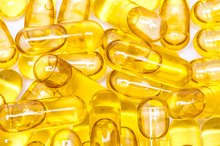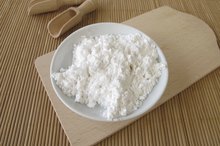What does fact checked mean?
At Healthfully, we strive to deliver objective content that is accurate and up-to-date. Our team periodically reviews articles in order to ensure content quality. The sources cited below consist of evidence from peer-reviewed journals, prominent medical organizations, academic associations, and government data.
- Digestive Diseases and Sciences: Pancreatic Supplements Reduce Symptomatic Response of Healthy Subjects to a High Fat Meal
- Digestive Diseases and Sciences: Pancreatic Supplements Reduce Symptomatic Response of Healthy Subjects to a High Fat Meal
The information contained on this site is for informational purposes only, and should not be used as a substitute for the advice of a professional health care provider. Please check with the appropriate physician regarding health questions and concerns. Although we strive to deliver accurate and up-to-date information, no guarantee to that effect is made.
Lipase & Fat Digestion
Without your digestive enzymes, you would be unable to extract the energy and nutrients from the foods you eat. These enzymes help break down the different components of the food you consume into smaller molecules that can be absorbed by your small intestine. Every digestive enzyme in your body acts on a specific component of food. Lipase is the enzyme your body uses to break down the fats in the food you eat.
If you are experiencing serious medical symptoms, seek emergency treatment immediately.
Dietary Fat Is Essential for Health
Fats are important macronutrients that play several essential roles in your body. They are the building blocks of phospholipids, key components of cell membranes; they store energy you need to live; and their components serve as intracellular messengers in your body and help produce hormones. Most of the fat you consume is in the form of triglycerides, which are large molecules. Your body uses lipase to break triglycerides into smaller components your cells and tissues can use.
- Fats are important macronutrients that play several essential roles in your body.
- Your body uses lipase to break triglycerides into smaller components your cells and tissues can use.
Lipase Digests Dietary Fat
Supplements that Suppress the Appetite
Learn More
Your pancreas makes the majority of lipase, but some also comes from your mouth and stomach. When you eat a fatty meal, stomach emptying slows and a small amount of fat is digested by gastric lipase in your stomach. This is especially true of certain types of triglycerides, such as those found in butter. Your liver produces bile, which is stored in your gallbladder -- when fat arrives in the small intestine, the gallbladder contracts and releases bile. Bile helps emulsify the fat, making it more accessible to digestion by pancreatic lipase. Pancreatic lipase digests the triglycerides into free fatty acids and monoglycerides, which your small intestine absorbs.
- Your pancreas makes the majority of lipase, but some also comes from your mouth and stomach.
Low-Lipase Disorders
The pancreas usually produces enough lipase to digest the food you eat, but people with certain health conditions may benefit from taking lipase supplements. People with celiac disease who have trouble maintaining a healthy weight may gain weight when they take extra lipase. A study published in the July 1999 issue of “Digestive Disease and Sciences” found that healthy subjects who ingested pancreatic lipase supplements along with a high-fat meal experienced less bloating, gas and feelings of fullness than a placebo group 4. The authors conclude that lipase supplements may also be beneficial to those with irritable bowel syndrome.
- The pancreas usually produces enough lipase to digest the food you eat, but people with certain health conditions may benefit from taking lipase supplements.
- The authors conclude that lipase supplements may also be beneficial to those with irritable bowel syndrome.
Lipase Supplementation
Side Effects of Zymex
Learn More
Food doesn't contain lipase, but supplements containing animal and plant enzymes are available at pharmacies and health food stores. Enzyme supplements may contain additional pancreatic enzymes, such as:
- protease
- which digests protein,
- amylase
- which digests sugars
Lipase supplements could cause mild nausea or gastric upset, and they might interact with some medicines. Children under 12 and women who are pregnant or breast-feeding should not take lipase supplements unless under a doctor’s supervision. Discuss taking extra lipase with your doctor.
- Food doesn't contain lipase, but supplements containing animal and plant enzymes are available at pharmacies and health food stores.
Related Articles
References
- University of Maryland Medical Center: Lipase
- Biochemistry Fifth Edition; Jeremy M. Berg et al.
- Krause’s Food, Nutrition and Diet Therapy 11th Edition; L. Kathleen Mahan and Sylvia Escott-Stump
- Digestive Diseases and Sciences: Pancreatic Supplements Reduce Symptomatic Response of Healthy Subjects to a High Fat Meal
- Zhou Q, Melton DA. Pancreas regeneration. Nature. 2018;557(7705):351–358. doi:10.1038/s41586-018-0088-0
- Rathnavelu V, Alitheen NB, Sohila S, Kanagesan S, Ramesh R. Potential role of bromelain in clinical and therapeutic applications. Biomed Rep. 2016;5(3):283–288. doi:10.3892/br.2016.720
- de la Iglesia-García D, Huang W, Szatmary P, et al. Efficacy of pancreatic enzyme replacement therapy in chronic pancreatitis: systematic review and meta-analysis. Gut. 2017;66(8):1354–1355. doi:10.1136/gutjnl-2016-312529
- Penn State Hershey Medical Center. Lipase. Review June 2015.
- Papaya. MedlinePlus. Reviewed March 2019.
- Lactose Intolerance. National Institute of Diabetes and Digestive and Kidney Diseases.
- Bromelain. University of Maryland Medical Center. http://www.umm.edu/health/medical/altmed/supplement/bromelain.
- Lipase. University of Maryland Medical Center. http://www.umm.edu/health/medical/altmed/supplement/lipase.
Writer Bio
Based in Minneapolis, Minn., Alyssa Northrop is a Registered Dietitian who has been writing about nutrition and health since 2004. Her work has been published in the scientific journal Explore. She holds a Master of Public Health in human nutrition from the University of Michigan.









